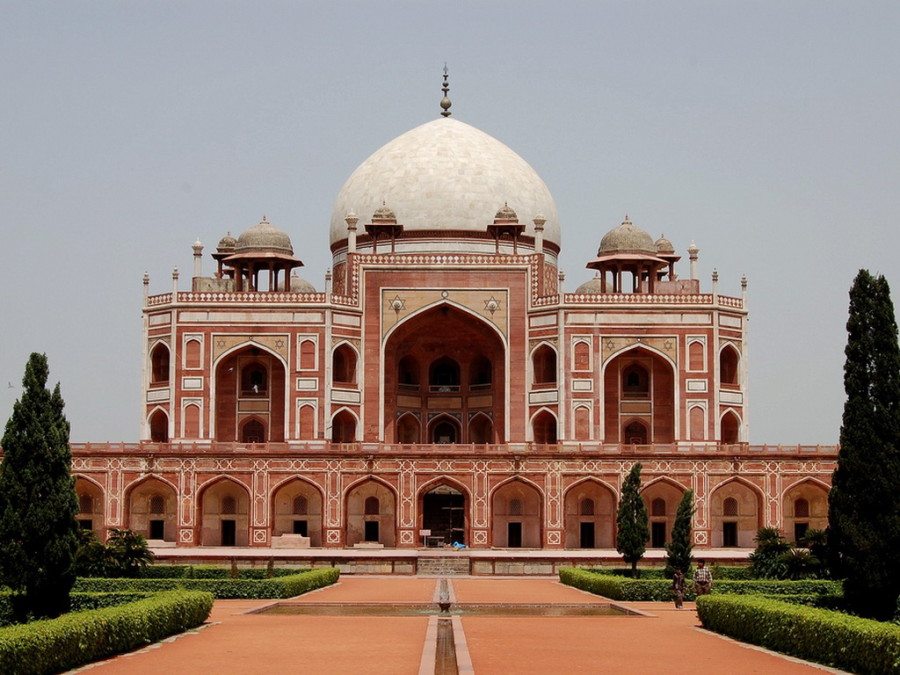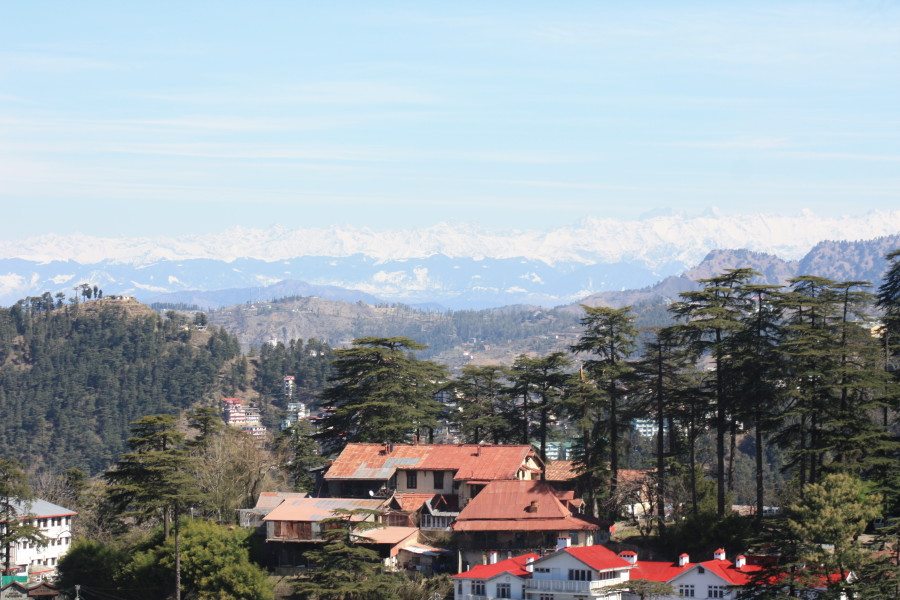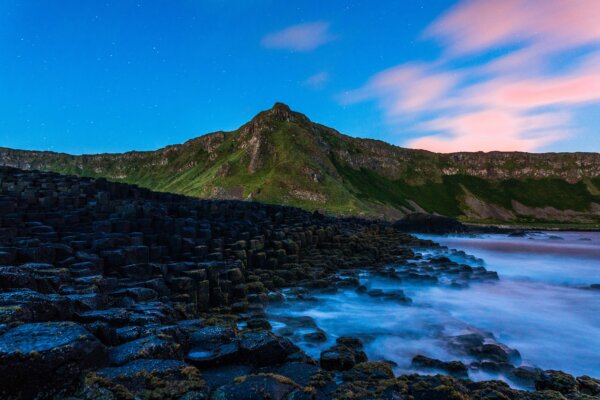Golden Triangle with Ranthambore – Trains, Tigers and the Taj Mahal
Prices starting from £1,099 per person
All Planet Rail holidays are tailor-made to suit your departure dates and requirements.
For more information or to book now,
please call 01347 82 52 92
Enquire Now

India can make a strong claim to be the most exciting and rewarding travel destination in the world. From the exhilarating pace of life in its colourful and vibrant cities to its exquisite temples and superb scenery, few visitors ever leave disappointed. This is a journey through the heart of India to explore the old and the new. Your Indian odyssey takes you to Delhi, the capital city, the Taj Mahal in Agra exemplifies the art and architecture of the Mughals; the beautiful palaces and bustling bazaars of Jaipur epitomize the rich culture of Rajputana; Ranthambore National Park provides a stunning contrast with its natural beauty and majestic tigers. It is wonderful to find all of this within close proximity of each other. You can experience a well-preserved haven of nature, history, art, architecture and culture, despite the onslaught of modernity and urbanization in the region.

9 night / 10 day holiday by Executive and Chair Class rail services on daytime trains staying in either 4 star deluxe or 5 star hotels, including 2 nights in Delhi before your onward journey, 1 night in Agra, 3 nights in Jaipur, 2 nights in Ranthambore and an overnight stay in Delhi on your return, plus transfers and meet & greet services between airports, stations and your hotels, excursions and hotels on a bed and breakfast basis, with lunch and dinner in Ranthambore.
You might like to include the 4 night Shimla Extension to your Golden Triangle with Rhanthambore tour to give you a full fortnight in India. This 13 night / 14 day holiday includes the same as shown above, plus 3 nights in Shimla and an overnight stay in Delhi on your return. Each of these holiday options and prices is shown in the table below:
| Holiday Options and Prices | Mid-April to September | October to mid-April |
| Main holiday, 4 star deluxe hotels | from £1,099 per person | from £1,249 per person |
| Main holiday, 5 star hotels | from £1,449 per person | from £1,699 per person |
| Shimla extension, 4 star deluxe hotels | from £549 per person | from £525 per person |
| Shimla extension, 5 star hotels | from £575 per person | from £549 per person |
Please note return flights from the UK are not included and can be booked for you. Please ask us for details and prices.
Day 1 – Arrival in Delhi
Your holiday begins as you arrive into Delhi’s International Airport. As you exit the airport a representative from our partner company, will meet you and transfer you to your hotel for your 2 night stay, the luxurious Taj Mahal Hotel (5 star), Ideally situated amidst 6 acres of landscaped grounds. You might like to spend the afternoon relaxing at the hotel or start by discovering this fascinating city.
India’s capital and a major gateway to the country, Delhi is a bustling metropolis, which successfully combines in its many and varied folds – the ancient with the modern. Amidst the fast spiralling skyscrapers lie the remnants of a bygone era in the form of its many captivating monuments, which stand as silent reminders of the region’s ancient legacy. The first impressions for any visitor travelling in from the airport are of a spacious, garden city, tree-lined with a number of beautiful parks.
This evening you have the option to take a private tour of the Arkshardham Temple with a musical fountain show. This tour takes you on a journey through the marvelous Akshardham Temple, where you’ll witness the enormity and beauty of this exceptional monument under the guidance and knowledge of a private expert guide. Visit the temple, appreciate its splendour, and watch the exceptional musical fountain show to experience Indian faith at its best.
Day 2 – Delhi

This morning after breakfast, you proceed for a full day combined city tour of Old and New Delhi. (The Guide will meet you at the hotel at approximately 0900 hrs. unless you request otherwise). In Old Delhi you will visit the 17th century Jama Masjid and walk through the narrow, winding lanes of colourful and bustling Chandni Chowk. You have the option of taking a rickshaw ride through these colourful, richly-scented bazaars. Then visit the Mughal Empire’s most opulent fort, the Red Fort for a photo opportunity, before you take a final stop at Raj Ghat, where Mahatma Gandhi was cremated.
This afternoon your guided visit continues to New Delhi. Your tour includes a drive past The Presidential Palace, the one-time imperial residence of the British viceroys, the India Gate, a memorial raised in honour of the Indian soldiers martyred during the Afghan war and a drive along the Rajpath past the Parliament House and secretarial buildings. You then visit Qutab Minar, the 12th century tower of victory built by a slave king and prototype of all minars (towers) in India before the last stop on the tour to the 16th century Humayun’s tomb, a precursor to the Taj Mahal.
Relax this evening in your hotel and perhaps indulge in some local speciality cuisine.
Day 3 – Delhi to Agra

Today after an early breakfast your transfer will take you from your hotel to Delhi railway station for the start of your journey to Agra. Relax in your executive class seat on board the Bhopal Shatabdi service and admire the passing scenery before arriving into the historic city of Agra, home to three UNESCO World Heritage sites.
Agra came into the limelight during the rule of the Afghan King Sikandar Lodhi – who had made it the capital of his empire. Later in 1526 A.D., the Mughal Emperor Babar took upon himself the task for rendering Agra, a unique character and beauty of its own. The next few hundred years of Agra witnessed the rise of the pomp and pageantry of three great Mughal monarchs – Emperor Akbar, Jehangir and Shahjahan. In modern times, the city of Agra is home to a thriving carpet industry where you can also find leather workers, sandstone and marble sculptors, some of whom claim to be direct descendants of the craftsmen who helped to build the Taj Mahal.
Upon arrival at Agra you have the opportunity to visit Agra Fort, where the ageing Emperor Shah Jahan, imprisoned by his son, watched from a distance, the fulfilment of his life’s dream, the building of the Taj Mahal in memory of his beloved wife. After the visit, you will be transferred to the ITC Mughal (5 star), an elegant and highly rated hotel, for check-in, where you can enjoy a leisurely lunch.
This afternoon you begin your tour of the Taj Majal (closed on Fridays). On the inner walls, jewel-like stones create beautiful designs in white marble. The Mughals perfected the art of embedding semi-precious stones into marble and the Taj is the finest example of this special process called pietra dura. It begins with a marble plate, varying in size. Then jewels are sliced paper thin and embedded in the marble with such precision that the joints are invisible to the naked eye. Unwind at your hotel this evening and savour your night in Agra.
Day 4 – Agra to Jaipur
This morning after breakfast, you will visit Fatehpur Sikri, a deserted red sandstone city, built by the Great Mughal Emperor Akbar as his capital and palace in the late 16th century. It was abandoned soon after it was built when the local wells went dry and it remains today in much the same condition that it was over 300 years ago. It is complete with palaces and mosques and used to be a town larger than London when it was originally constructed. Now it is an extraordinary place to wander around with its abandoned buildings in near perfect condition.
After your tour you will be transferred to Agra Railway station where you board your AF JP Shatabadi service to Jaipur. Enjoy your journey in executive class as you travel west through northern India. On arrival in Jaipur, your transfer conveys your luxury hotel, the Jai Mahal Palace (5 star), an 18th century heritage property spread amongst 18 acres of beautiful Moghul gardens, for your 3 night stay.
Jaipur, the fascinating capital of the marvellous state of Rajasthan, is one of the well-planned cities of its time. The graceful architecture of the city that runs across in pink colour has earned Jaipur the title of the “The Pink City”. Jaipur is predominantly known for its musicians, artisans and craftsmen. Today, it is flocked by masses for its fine jewellery, varied textiles and sumptuous cuisine. There are innumerable sagas and stories of culture, traditions, practices and valour. This diverse land of rich cultural heritage is a royal treat for tourists all over the world.
Day 5 – Jaipur – Full Day sightseeing of Jaipur (optional walking tour of Jaipur with an expert)

Following a buffet breakfast you will proceed to visit the capital of Amber to see the fabulous Amber Fort. Maharaja Mansingh, Mughal Emperor Akbar’s most successful General, started the construction of the Amber Fort in the 17th century. Before the City Palace was constructed in Jaipur, Amber was the seat of power. The fort is surrounded by fortified battlements and overlooks the Moat Lake. Ruins and remains are spread over the Aravali hills and sprawling crenulated walls lattice the surrounding area.
An elephant or alternatively a jeep will spare you the trouble of reaching up to the fortress. Once on top, stroll through the sprawling complex of courtyards and halls. Many of the rooms have delightful wall paintings, with precious stones and mirrors inlaid in the walls. Most fascinating, perhaps, is the Sheesh Mahal (hall of mirrors) where a single lamplight is reflected in the many mirrors, lighting up the room.
En-route to the Amber Fort you have the chance to see the `Palace of the Winds’, otherwise known as Hawa Mahal. It is really an elaborate façade, extremely intricate in its pink sandstone carving. The cool wind blows through its frontage of windows and latticed screens through which the queens of the court once viewed the streets of the city.
This afternoon, your visit continues with the City Palace, which is an overwhelming complex of exquisite palaces, gardens and courtyards, decorative art and carved doorways. The palace museum houses collections of rare manuscripts, armoury, costumes, carpets and miniature paintings.
Jaipur’s Jantar Mantar is the most famous of five observatories built by Sawai Jai Singh in India. Jai Singh was a great admirer of progresses and research made in the fields of science and technology, and he was passionate about astronomy. There is a very interesting story behind the construction of this observatory, considered as the largest stone observatory in the world. Sawai Jai Singh sent his emissaries to all parts of the world before commencing the construction of this observatory. The emissaries returned with many manuals on astronomy containing cutting-edge technological information. One of these manuals was a copy of La Hire’s “Tables”. The king ordered the observatory to be built according to the details contained in this manual. When the construction ended, to the astonishment of the king and others, the observatory was 20 seconds more accurate than the one mentioned in La Hire’s “Tables”.
You have the option this evening to relax at your hotel or to join a fascinating walking tour of Jaipur, with an expert. Take the opportunity to talk with the locals whilst sampling some of the region’s culinary delights; try pakoras, aloo tiki, samosa and sweets from some of the city’s most popular street food vendors. Observe local artisans in their workshops; jewellers and silversmiths and gold and silver foil makers. The iconic Hawa Mahal, also called the Palace of the Winds, is the meeting point at which this two and a half hour walk begins (Markets are closed on a Sunday).
Day 6 – Free day in Jaipur (optional cooking demonstration with dinner at Dera Mandara)
You have a full day to discover more of the wonderful city of Jaipur.
This evening you have the option to either relax in the hotel or to join a special cooking lesson/dinner with – Thankur Durga Singh, the current custodian of Dera Mandawa who is a keen observer of history, culture, religion, current affairs, and is a mine of knowledge so vast that he has a point of view on anything under the sun. He is what one could call a modern traditionalist, actively seeking the use of modern technology and methods to support the principles of traditional living. The inquisitive can have endless conversations with him on a number of his projects like rain -water harvesting, biogas plant, solar heating and, even, healthy cooking. He would be more than delighted to share his experiences with you.
Day 7 – Jaipur to Ranthambore

Today after a leisurely breakfast you will be driven to Ranthambore.
Ranthambore National Park is situated in India’s north-western state of Rajasthan, near the town of Sawai Madhopur, midway between Bharatpur and the Kota townships. Ranthambore National Park, covering 410 sq. km, runs along the easternmost spur of the Aravalli to the Vindhya ranges. At one time, Ranthambore was the private hunting ground for the Royal family of Jaipur before being declared a Sanctuary. In 1972 it was brought under the Project Tiger scheme. The dry deciduous forest covers open valleys with lush vegetation around the lakes, and open grasslands in the higher slopes. This varied flora supports a large number of animals including a variety of deer, the sloth bear, the shy caracal, leopards and of course, the majestic tiger.

Upon arrival at Ranthambore, you will be assisted for your check-in at your hotel, the Vivanta by Taj Sawai Madhopur (5 star), a former royal hunting lodge spread over 12 acres of landscaped gardens, before you enjoy an afternoon game drive by shared jeep in Ranthambore National Park.
Day 8 – Ranthambore – Game Drives in Ranthambore National Park
You proceed on a jungle safari in Ranthambore National Park by shared jeep this morning, before returning to your hotel for breakfast. This afternoon you again proceed for another jungle safari by shared jeep during which you will have ample opportunities to get close to the fascinating flora and fauna of this stunning landscape.
Savour your final evening in Ranthambore and enjoy a complimentary dinner service at the hotel.
Day 9 – Ranthambore to Delhi
After an early breakfast, it is time to bid farewell to the tranquillity of Ranthambore as you transfer to the station for your onward journey by NZM Jan Shatabadi ‘Chair Class’ service back to Delhi. You arrive in time for lunch and your meet and greet service for your transfer, which will take you back to the Taj Mahal Hotel (5 star), your hotel for the night. You have the rest of the day at leisure.
Day 10 – Depart Delhi
Enjoy your final morning in India with a leisurely breakfast, before your transfer conveys you to Delhi International airport for the connecting flight for your onward destination.
Optional Shimla Extension
Day 10 – Delhi to Shimla

Awake this morning and enjoy breakfast in wonderful surroundings, before your transfer whisks you to the station to board the Kalka Shatabdi train service to Chandigargh. Settle into your Executive Class seat and watch the world fly by as you travel north to the city of Chandigargh. Here you are transferred by car to the city of Shimla, beautifully set within the backdrop of Himalayan peaks and green pastures and one of India’s most popular hill resorts. On arrival into Shimla you are free to check-in to your hotel for the next 3 nights, the highly rated Oberoi Cecil Hotel (5 star), idyllically nestled between steep forested hillsides falling away in all directions.
Shimla, the capital city of Himachal Pradesh, lies about 343 km from Delhi at an altitude of 2,213 metres above sea level. Before the British discovered it in 1819, Shimla was a small village that was part of the Nepalese kingdom. In 1830, the local Raja was persuaded to part with the land by the British and the settlement became the subcontinent’s most fashionable summer resort. Shimla was declared the summer capital of India in 1864. After India’s independence, Shimla became the capital of the Punjab till 1966, when it became part of Himachal Pradesh.
You have this evening at leisure in the hotel. You might like to take this opportunity to relax at the hotel’s indoor heated swimming pool or simply gaze across Himalayan backdrop as the sun sets.
Day 11 – Shimla – Toy Train (UNESCO World Heritage) ride from Shimla to Kandaghat and Half Day sightseeing of Shimla

Excitement builds this morning as you a transferred to Shimla station for the UNESCO World Heritage toy train ride from Shimla to Kandaghat. Sit back and relax as you are transported back in time to relive one of the most scenic train journeys in India. Watch as the dramatic views of the hills and surrounding villages open up to you before you arrive into Kandaghat. Here you alight from the train and are transferred back to Shimla.
This afternoon enjoy a half day sightseeing of Shimla, taking in sights such as the Vice-Regal Lodge, which also happens to be the place where the partition of India into two countries, India and Pakistan, was planned on the world map. The British architecture here is amazing; the wooden work inside the building is still kept alive as it was during the British rule. The building is now used by Indian scholars and is called the Institute for Advanced Studies. After the tour of this impressive building, visit a Hindu temple containing shrines to the many and various Hindi gods.
In the evening, enjoy a leisurely stroll back along the Mall to Scandal Point. En route, it may be possible to have a quick look inside the Gaiety Theatre or Christ Church. Alternatively you might like to find a spot for refreshments whilst viewing the snow-capped Himalayan peaks (if the weather is clear) before you enjoy a further night at the hotel.
Day 12 – Free time in Shimla
You have a full day to further explore Shimla, the wonderful capital of the northern Indian state of Himachal Pradesh. Savour your final night in the Himalayan foothills and perhaps sample some local delicacies.
Day 13 – Shimla to Delhi
After breakfast your transfer will take you south-west through undulating Indian scenery to Kalka station, where you connect with your Kalka Shatabdi executive class service for Delhi. On arrival into Delhi your transfer will swiftly return you to the Taj Mahal Hotel (5 star) or the final night of your holiday.
Day 14 – Depart Delhi
Today marks your final morning in India. Your transfer will pick you up from the hotel after breakfast and take you back to Delhi International airport for the connecting flight for your onward destination.















